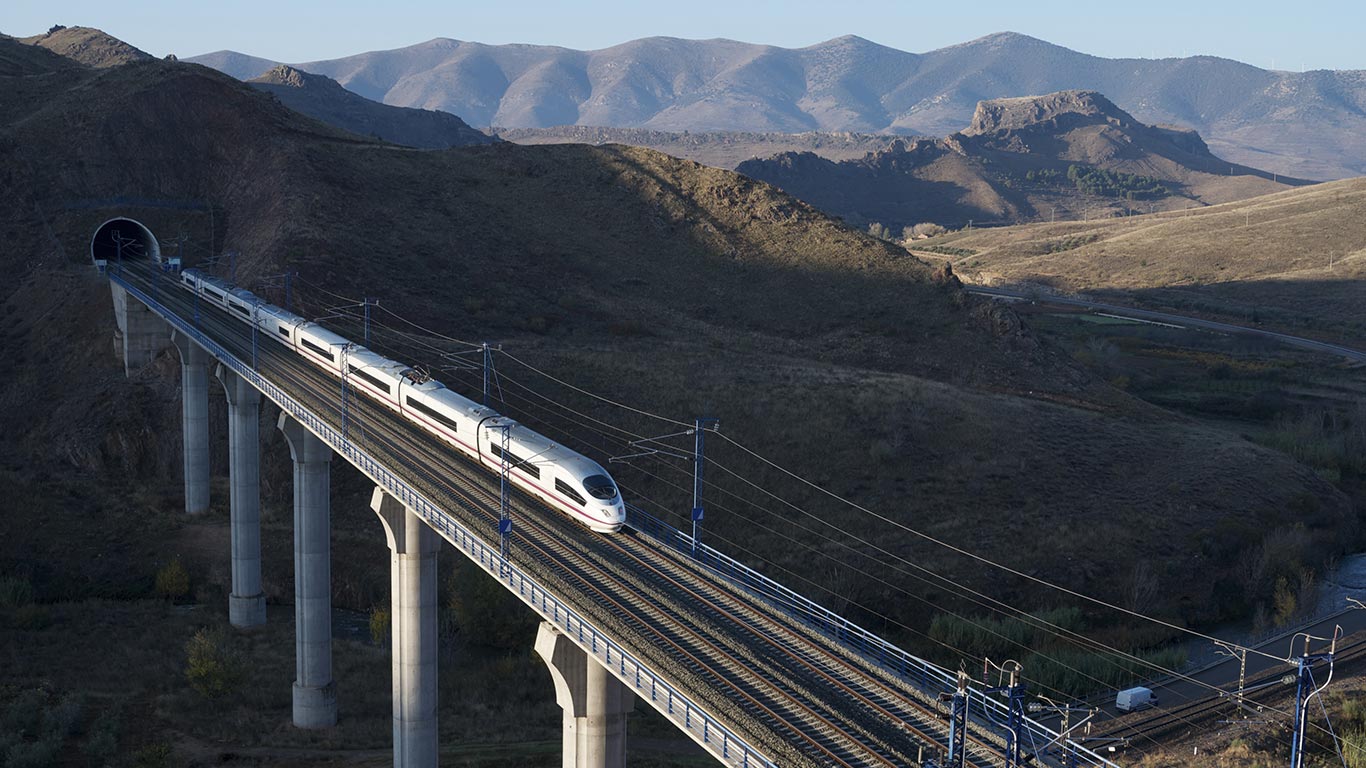1) Strengthening the attractiveness of the railways
- Ensuring safety, health and hygiene on board and around the trains
Are passengers going to come back to trains after the crisis? Unimaginable a year ago, the question is now being asked by all players in the sector. Of course, the railways have undeniable environmental, practical and economic assets to be able to imagine that our children and grandchildren will still enjoy the pleasure of train travel in the coming decades. However, the recovery of traffic in 2021 is still rather vague and the experts of the sector bet on a decrease in the use of public transport in the coming months, if not in the longer term for the business clientele teleworking, which is estimated to decrease by -5 to -10% in volume. How can we limit such a phenomenon, which risks representing a serious loss of income for the entire sector, and at the same time restore the image of public transport, which is currently wrongly designated as the scapegoat for the contamination? The priority challenge will be to raise the level of health safety. In a world traumatised by COVID-19, operators will have to offer travellers new guarantees and enhance their offers, for example by promoting air filtration solutions, encouraging and facilitating compliance with new onboard hygiene measures or redesigning the spaces in their cars to ensure a comfortable distance between passengers. However, the economic equation remains to be solved, because fewer passengers per m2 means additional costs: the players in the value chain will have to be imaginative.
- Improving passenger comfort and connectivity
Another fundamental element is the quality perceived by the passengers. If operators wish to attract customers to the trains, they will have to be even more ingenious to make trains even more comfortable and, like planes or cars, ensure that passengers feel a “sense of well-being” from the moment they enter the station to the moment they board the train (materials, layout, electrical sockets, etc.). The objective is to create a “unique customer experience” that is both distinctive and attractive. This operation to win back customers will also concern business travellers, the profitable segment of the pre-CVID period. This target has largely converted to teleworking in recent months and should certainly continue to limit its journeys, whether they are daily trips (offices, meetings, etc.) or more occasional ones (trade fairs, etc.). To make these professionals want to travel again, the rail sector will have to offer a new level of comfort on board, similar to that of the office or home, which of course requires perfect access to the Internet, with ever-increasing speeds for a smooth flow of video, data and voice, thanks in particular to the introduction of 5G. If operators wish to attract customers back to the train, whether for short, regional, intercity or long international journeys, in competition with air travel, 5G is a must. Travellers on trains and metros today need to be permanently connected, without interruption.
2) Digitalising rail transport
- To increase line capacity
Increasing the capacity of “mass transport” will be the only way to meet the growing urbanisation challenge in the long term and the resulting road congestion. However, one way to increase this capacity on existing or new railway lines is to increase the frequency of trains. To do this, digitalisation is key: it allows the train to calculate and optimise its emergency stopping distance with the one in front of it. The distance between successive trains is then reduced in complete safety for passengers, and the use and capacity of the line are increased.
As an example, Europe is harmonising its rail signalling with the ERTMS (European Railways Traffic Management System), which is based on digital technologies, with the aim of not only promoting interoperability between countries, but also increasing transport capacity, both regionally, nationally and internationally, by increasing the number of trains per hour. In addition to this, operators like SNCF are testing semi-automatic to automatic driving modes, freeing themselves from manual modes (Grade of Automations: GoA 3 and 4).
In urban areas, we see the same trend: for example, instead of having one metro every 3 minutes on the same line, the rate changes to a metro every 2 minutes or even less. Automation is then necessary, as manual mode does not allow these frequencies.Line 14 of the Paris metro is an example of this.
In the long term, train automation will for sure increase availability and reduce operating costs, even if the investments are substantial and must be amortised over long periods.
- To improve train availability while lowering costs
The availability of trains is closely linked to the reliability of their components and the day-to-day “health” of their components (brakes, etc.). Today, thanks to the development of onboard sensors and the Internet of Things, it is possible to obtain real-time diagnoses of the train’s state of health, to predict failures, and therefore to organise cost-effective preventive maintenance, rather than more costly corrective maintenance, or even to manage an on-line stop.
Modelling is also becoming essential for anticipating, forecasting and defining the behaviour to be adopted during the life cycle of the train: digital twins of the physical trains can be subjected to operational scenarios without physical tests. This is also a significant cost reduction area, with methodologies already in use in the automotive sector.
Train availability also depends on the availability of spare parts. Here, 3D printing technology has an important role to play, in the case of supply chain disruptions, or implementation or delivery that are incompatible with short response times.
Finally, Digital with “Factory 4.0” inspires the renovation and construction of efficient and modern maintenance workshops, in the context of an increased competition linked to the liberalisation of the sector, in progress or to come depending on the country: the robotisation of maintenance operations is being studied, promoted and financed by European programmes. The operating cost of a train being 40% linked to its maintenance over the 35-year life of the equipment, it is easy to understand the economic contribution of digital technology.
3) Designing ever more virtuous trains
The pandemic has reinforced the conviction of politicians that the mode of rail transport for passengers as well as for goods remains one of the most environmentally friendly and respectful for the planet in terms of the volume transported per unit of time. Indeed, at least three times less polluting than road transport, rail can already claim its place at the top of the ranking of the most environmentally sustainable modes of transport, whether for the transport of people or goods. That said, the sector must continue its efforts to further improve the environmental footprint over the entire life cycle of rolling stock and the infrastructures that support it at an acceptable cost to society. What are the rail industry’s current avenues for greening fleets? First of all, let us note the development of new modes of electrical energy storage to reduce the consumption of diesel fuel, particularly on non-electrified sections of track. Over the past 10 years, thanks in particular to the boom in e-mobility in sectors such as the automobile or heavy goods vehicle industries, the performance of batteries has significantly improved in terms of power and efficiency.
Then new fuels with a promising carbon footprint compared to fossil fuels have moved from experimentation to commercialisation, such as Alstom’s Hydrogen iLint train, or prototypes running on liquefied natural gas being tested in Spain. Other manufacturers are following suit. Hydrogen fuel cells, as a source of electricity on board and discharging only water as a waste product, are enjoying great media visibility and a major investment by the railway industry. At the European level, countries such as France and Germany have thus released budgets of several billion euros to support the development of the hydrogen sector. We now must transform this promising enthusiasm into economically viable and technically coherent solutions. Implementing hydrogen fuel in the rail sector is not only about integrating a new propulsion mode on board new trains, or renovating existing fleets. The rail sector must also think in a systemic way about the deployment of hydrogen production and supply chains adapted to its needs. It must do so in coordination with other sectors of industry, which are more demanding, in order to lower and share the costs. Moreover, even if this potentially “cleaner” energy seems to have the favour of elected representatives, engineers and the media today, other avenues for putting an end to diesel should not be neglected. Hence the interest of a systemic approach, to which SEGULA fully subscribes to be the “driving force” in reducing the rail sector’s CO2 footprint.
Verbatim
—
“The rail sector must take advantage of this period to impose the idea that the train is the sustainable mode of transport of the future. The time has come to mobilise. The whole sector must now speak with one voice. »







 FOR A BETTER EXPERIENCE
FOR A BETTER EXPERIENCE